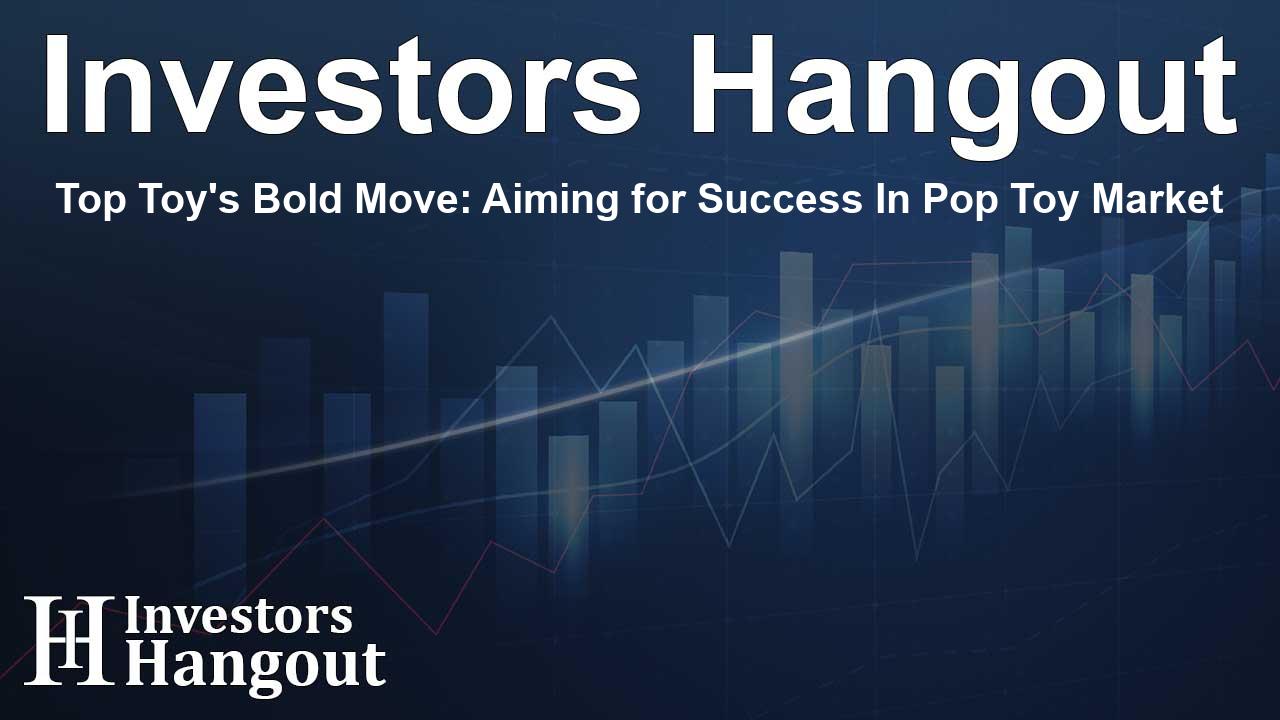Top Toy's Bold Move: Aiming for Success In Pop Toy Market

The Rise of Top Toy International Group Ltd.
China’s toy industry is blooming, and at the forefront is Top Toy International Group Ltd. This company, birthed from the well-known Miniso brand, has recently set its sights on a future in the vibrant Hong Kong IPO market. Just five years after its inception, Top Toy is stepping out of the shadows of its parent company, Miniso, to establish itself as a significant player in the collectible toy sector.
Key Insights into Top Toy's IPO Plans
Top Toy aims to replicate the success of the leading pop toy brand, seeking to leverage its parent company’s vast network of over 7,000 stores worldwide. With a staggering valuation of $1.3 billion, the company has carved a niche for itself, focusing on collectible toys and self-developed intellectual properties. The IPO is strategically timed, riding the wave of a growing global enthusiasm for trendy collectibles.
Miniso's Influence on Top Toy
Launched in 2013, Miniso transformed the retail landscape, taking cues from popular Japanese chains like Uniqlo and Daiso. It flourished by providing affordable and diverse products that resonate with 'kawaii' aesthetics. Today, with over 4,300 domestic outlets and more than 3,300 international locations, Miniso has set a robust foundation for Top Toy's ambitions.
The Competitive Landscape
Top Toy’s journey isn’t without challenges. Competing against heavyweights like Pop Mart, which has seen its revenue triple recently—soaring to 13.8 billion yuan ($1.9 billion)—presents a significant challenge. While Top Toy reported a commendable 60% revenue growth in the past six months, its earnings still represent a fraction of Pop Mart's success.
Financial Standing Comparison
The financial metrics tell a compelling story. Although Top Toy’s revenue reach of 1.36 billion yuan and a profit of 181 million yuan suggest growth, Pop Mart’s performance remains the benchmark. The stark difference in market capitalization—with Pop Mart valued at HK$340 billion compared to Top Toy’s modest $1.3 billion—underscores the competitive challenges faced by new entrants like Top Toy.
Building a Unique Identity
Top Toy is striving to differentiate itself through its self-developed intellectual property. Recent figures show that the share of revenue from proprietary IP has grown significantly, now representing approximately half of its total earnings. This is a critical shift that mirrors the successful strategies employed by established brands within the same market.
Expanding Market Presence
Currently, the company operates primarily in China, with 299 stores total, of which only 15 are located internationally across Thailand, Malaysia, Indonesia, and Japan. This limited overseas presence signifies a potential for growth, as the global demand for collectible toys continues to escalate.
Emerging Competitors in the Toy Market
The landscape of the toy sector is evolving, with other companies like Kayou Inc. and 52Toys also seeking to enter the Hong Kong market. Similar to Top Toy, they are banking on significant underwriter support, reflecting the growing popularity of collectible toys. As the competition intensifies, their strategies will be vital for carving out market share.
Understanding Market Trends
The Chinese toy market, valued at 20.7 billion yuan in 2019, is predicted to grow to 58.7 billion yuan by 2024. This booming sector offers a fertile ground for new companies looking to establish themselves among established players. Top Toy holds the third-largest market share at 2.2%, trailing Pop Mart and Lego.
Future Outlook for Top Toy
Despite the muted market reaction to its IPO plans, Top Toy's existing relationship with Miniso provides a strategic advantage. It hints at the brand’s potential to leverage its parent company’s extensive distribution network to optimize sales. As the market evolves, Top Toy's commitment to enhancing its self-developed products will be crucial in navigating its path forward.
Frequently Asked Questions
What is Top Toy International Group Ltd.?
Top Toy International Group Ltd. is a spinoff from Miniso, focusing on collectible toys and aiming to carve out a presence in the competitive toy market.
How does Top Toy’s market share compare to its competitors?
Top Toy currently holds a 2.2% market share, positioning it third in the Chinese toy market, significantly behind Pop Mart and Lego.
What financial strategies is Top Toy pursuing?
Top Toy is focusing on increasing its revenue from self-developed intellectual properties to enhance its profitability and brand identity.
When is Top Toy planning to go public?
The specific timing for Top Toy's public listing has not been confirmed, but the recent filing indicates a proactive approach towards capitalizing on market trends.
What challenges does Top Toy face in the toy market?
Top Toy faces significant competition from established brands like Pop Mart, as well as the need to effectively build its brand recognition and market presence.
About The Author
Contact Lucas Young privately here. Or send an email with ATTN: Lucas Young as the subject to contact@investorshangout.com.
About Investors Hangout
Investors Hangout is a leading online stock forum for financial discussion and learning, offering a wide range of free tools and resources. It draws in traders of all levels, who exchange market knowledge, investigate trading tactics, and keep an eye on industry developments in real time. Featuring financial articles, stock message boards, quotes, charts, company profiles, and live news updates. Through cooperative learning and a wealth of informational resources, it helps users from novices creating their first portfolios to experts honing their techniques. Join Investors Hangout today: https://investorshangout.com/
The content of this article is based on factual, publicly available information and does not represent legal, financial, or investment advice. Investors Hangout does not offer financial advice, and the author is not a licensed financial advisor. Consult a qualified advisor before making any financial or investment decisions based on this article. This article should not be considered advice to purchase, sell, or hold any securities or other investments. If any of the material provided here is inaccurate, please contact us for corrections.
